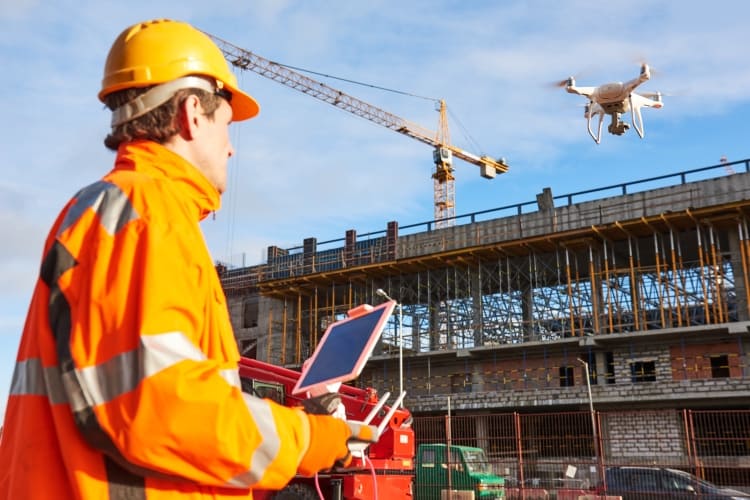New DroneAnalyst Report Finds Drone Hobbyists Drive Majority of Commercial Drone Adoption
BY Zacc Dukowitz
28 January 2021You’ve probably heard this story before.
A company is facing a challenge, and one of their employees says, “You know, a drone could help with that.”
The company conducts tests, and eventually starts incorporating drones into its work.

Over the years we’ve heard different versions of this story from people in all kinds of industries, from law enforcement, to construction, to wildlife conservation.
And it makes sense.
Often, people facing a challenge aren’t aware of new technology that could help because they simply haven’t encountered it. All it takes is that one team member who is into drones to bridge the gap.
Now a new report from DroneAnalyst confirms what all these anecdotes would lead us to believe: the majority of commercial drone adoption is driven by hobbyists and drone enthusiasts from within an organization, not by upper management hunting for innovative new solutions.
DroneAnalyst Research Methodology
To conduct its research, DroneAnalyst surveyed 500 business and agency drone users across a variety of industries and regions.
The goal of the study was to figure out how drone programs got started. Were they typically born of bottom-up or top-down approaches? And who usually drove adoption within an organization?
Bottom-up means someone working within an organization proposing a solution to upper management (for example, a police officer proposes testing drones to their chief).
Top-down, on the other hand, means that organization leaders are the ones who discover and impose adoption on those in the field, doing the work (for example, a CFO at an oil company asks their inspection team to test drones during the next turnaround time to see if they can drive down inspection costs).
In the survey, respondents were able to select any number of six options or just select “none of the above.” Three of the six options represented bottom-up approaches (these are brown in the chart below), and three represented top-down approaches (these are yellow).
Here are the key findings from DroneAnalyst’s research.
68% of Drone Programs Start from Bottom-Up Approaches

Image source: DroneAnalyst
Note: You might notice that the percentages in the graph above add up to more than 100. That’s because survey respondents were able to select multiple responses.
After correcting for multiple answers, DroneAnalyst found that 68% of drone programs started from a bottom-up approach (the brown answers in the chart above).
Among these bottom-up drivers of drone adoption, the top catalyst for the creation of a drone program was an individual’s interest in flying drones as a hobby.
Only 25% of Drone Programs Start from Top-Down Approaches
DroneAnalyst also found that only 25% of drone programs start from top-down approaches, which is a pretty small percentage overall.
Of those top-down drone programs, less than half came from the innovation department within a company. That seems like a very small percentage when you consider that finding new technology is literally in that department’s job title.
What about Newer Drone Programs?
Of course, it could be that newer drone programs have a different bottom-up/top-down split when looking at how they got started.
Given that drones are a fairly new tool for commercial work, it would make sense that newer drone programs might be more top-down as commercial drone adoption starts to become mainstream.
DroneAnalyst’s report also looks into this question and the answer is a little surprising—it turns out that bottom-up programs are actually more prevalent in newer drone programs.
Read the full report on the DroneAnalyst website to learn more about this finding and DroneAnalyst’s take on all of the data it has collected about how drone programs get started.
Why Are Hobbyists Driving Commercial Drone Adoption?
Now that DroneAnalyst has confirmed our anecdotal belief—that is, that many commercial drone programs get started by people who simply enjoy flying in their free time—we are left wondering why this is the case.
The answer probably has a lot to do with how new drone technology still is.
Even though drones have gone mainstream among consumers, most big companies are very slow to adopt new practices.
To draw from some representative anecdotes, I have personally spoken with an inspector at a huge oil company who has demonstrated several times that using drones for inspections could save the company millions, drive down safety concerns, and increase the frequency and efficiency of inspections.
But despite collecting lots of data showing these benefits, they still face internal push-back when it comes to wide-spread adoption.
Another contact who works for a global corporation that makes agricultural products has demonstrated similar benefits for drone inspections, and experienced similar push-back.
In fact, I’ve heard the same story over a dozen times from inspectors and drone program heads at large companies all over the world.
The push-back comes primarily from those in upper management who are wary of adopting new practices. But it can also come from those in the same department or neighboring departments who are hesitant to try new things.
A related issue is that companies may buy a drone for commercial work, like inspections, and then never use it due to a lack of proper education. This situation can confirm a false assumption that the drone is to blame, when in fact company policy and culture have failed to pave the way for the adoption of new practices.
Commercial drone adoption at scale is coming—that seems inevitable.
But given how slowly many companies move, it may be several years before we actually start reaping the benefits for safety, savings, and efficiency that wide-scale adoption can provide.
Facing push-back in your attempts to start a drone program at your job? Share your thoughts and experiences in this thread on the UAV Coach community forum.


